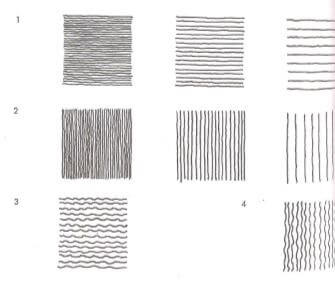Rendering Techniques Assignment Help
Basic Rendering Techniques, Rendering Of Plans, Elevations, Sections And Graphic Objects In 2D And 3D (Ink And Colour)
Rendering is the term used for the method of colouring drawings in architectural practice. Before the draughtsman sets brush to paper he must see that his drawing is as perfect as he can make it. Once the colour is applied, even only the first wash, it is exceedingly difficult, in fact almost impossible, to erase any wrongly drawn lines. Always remember you are not endeavouring to produce a pretty drawing but to make your geometrical presentation more intelligible and convincing. Above all, rendering, especially in water colour, if it is to be accomplished successfully involves a fair amount of time and labour. There will be occasions when the draughtsman feels his work is not going at all well. This sometimes happens after the application of the first initial washes.

Pen Strokes
Before the student commences the actual rendering he will first find it necessary to mount his sheet on the drawing board for the purpose of stretching it. If this process is ignored, he will find, on the application of the first wash, that the sheet will cockle and crinkle like a piece of corrugated iron, making an impossible surface on which to work.
In rendering there are several types of media used, but with all, the technique is practically the same. The most usual medium is water colour although occasionally pen and ink, pencil, oil or poster colour is introduced to emphasise details. There are several general principles but the student is free to develop his own style.
Rendering Techniques Assignment Help By Online Tutoring and Guided Sessions from AssignmentHelp.Net

Water Colour Rendering
All rendering must be carried out methodically. It is wrong to work up one portion of a drawing first. Large washes should be applied and so on to the smaller ones and finally the details, the last mentioned consisting of mere blobs of colour applied by means of a fully loaded brush. Incidentally always use a fully loaded brush throughout the application of a wash and apply the material wetly with broad, sweeping strokes.


